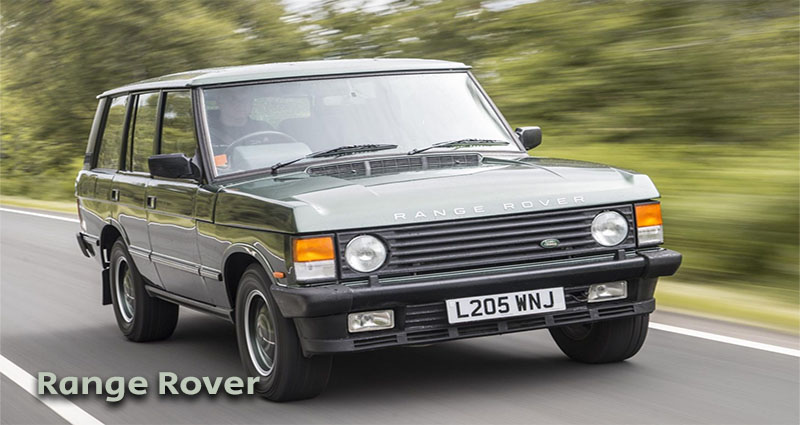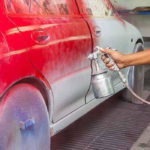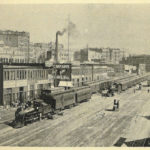Are you a fan of vintage cars? Do you dream of owning a classic Range Rover? Well, you’re in luck! In this comprehensive buying guide, we will take you on a journey through the world of Range Rover Classics. These timeless beauties are not only a symbol of luxury and elegance but also a testament to the rich heritage of the Range Rover brand. Whether you’re a seasoned car collector or a first-time buyer, this guide will provide you with invaluable tips and advice on finding and evaluating the perfect vintage gem. From understanding the different models and their unique features to knowing what to look for during a pre-purchase inspection, we’ve got you covered. So, get ready to embark on an adventure filled with nostalgia, excitement, and the thrill of owning a true automotive icon. Let’s dive in and discover the world of Range Rover Classics together!
Why buy a Range Rover Classic?
The Range Rover Classic holds a special place in the hearts of automotive enthusiasts. It was the first luxury SUV to combine off-road capabilities with high-end luxury, and it paved the way for the modern SUV craze we see today. But why should you consider buying a Range Rover Classic? Well, for starters, these vehicles exude a timeless appeal that is hard to find in modern cars. The classic design, with its boxy shape and iconic front grille, is instantly recognizable and commands attention wherever you go. Moreover, Range Rover Classics are known for their ruggedness and reliability, making them perfect for both off-roading adventures and everyday driving. Whether you’re navigating through city streets or conquering challenging terrains, a Range Rover Classic will always deliver a smooth and comfortable ride. If you’re a car enthusiast who appreciates the blend of luxury and versatility, a Range Rover Classic is an excellent choice.
Factors to consider when buying a Range Rover Classic
Before diving into the world of Range Rover Classics, it’s essential to understand the factors you need to consider when buying one. First and foremost, you need to determine your budget. Range Rover Classics vary in price depending on factors such as year, condition, and rarity. Setting a budget will help you narrow down your options and ensure that you don’t overspend. Next, you need to decide whether you want to buy a fully restored Range Rover Classic or one that requires some work. Restored models offer the advantage of being ready to drive off the lot, but they can be more expensive. On the other hand, if you’re a DIY enthusiast who enjoys working on cars, you might find joy in bringing a neglected classic back to its former glory. Additionally, you should consider your intended use for the vehicle. Will it be a weekend cruiser or a daily driver? This will help you determine the level of comfort, features, and practicality you require. Finally, don’t forget about insurance and registration costs, as well as any maintenance and repair expenses that might arise. By considering these factors, you’ll be well-prepared to make an informed decision when it comes to buying a Range Rover Classic.
Researching and finding Range Rover Classic models for sale
Now that you’ve decided to take the plunge and buy a Range Rover Classic, it’s time to start your search. The first step is to conduct thorough research to familiarize yourself with the different models and their specifications. Range Rover Classics were produced from 1970 to 1996, and during this time, various iterations and updates were made. Understanding the different model years, engine options, and trim levels will help you narrow down your search and find the perfect vintage gem. There are several resources available online, such as enthusiast forums, dedicated websites, and classified ads, where you can find Range Rover Classics for sale. These platforms provide a wealth of information, including detailed descriptions, photos, and contact details for sellers. It’s essential to carefully review each listing, paying attention to factors such as mileage, service history, and any modifications that have been made. This will help you identify potential red flags and ensure that you’re getting the best possible deal.
Evaluating the condition of a Range Rover Classic
When it comes to vintage cars, the overall condition plays a significant role in determining its value and potential future maintenance costs. Therefore, it’s crucial to thoroughly evaluate the condition of a Range Rover Classic before making a purchase. The first step is to visually inspect the vehicle, paying attention to the bodywork, paint, and any signs of rust or corrosion. It’s also important to check for any dents, scratches, or mismatched panels that might indicate previous accidents or poor repairs. Next, you should take a close look at the interior, checking for signs of wear and tear, such as cracked leather, faded upholstery, or damaged dashboard components. Don’t forget to test all the features and electrical systems, including the air conditioning, lights, and audio system, to ensure that everything is in working order. Finally, it’s highly recommended to have a professional mechanic perform a thorough pre-purchase inspection. They will be able to identify any underlying mechanical issues and provide you with an estimate of the potential repair costs. By carefully evaluating the condition of a Range Rover Classic, you can avoid any unpleasant surprises and make a confident buying decision.
Key features and options to look for in a Range Rover Classic
Range Rover Classics were known for their luxurious interiors and innovative features, which set them apart from other SUVs of their time. When buying a Range Rover Classic, it’s essential to familiarize yourself with the key features and options that were available. For example, early models were equipped with a full-time four-wheel-drive system, which provided excellent off-road capabilities. Later models introduced additional features such as air suspension, power windows, and a more refined interior. Depending on your preferences, you might prioritize certain features, such as a sunroof, leather seats, or a premium audio system. It’s also worth noting that some Range Rover Classics were fitted with special editions or limited-run options, which can significantly increase their desirability and value. By understanding the different features and options available, you’ll be able to make an informed decision and find a Range Rover Classic that matches your preferences and budget.
Common issues and potential red flags to watch out for
While Range Rover Classics are known for their durability and reliability, like any vintage car, they can have their fair share of issues. Therefore, it’s crucial to be aware of the common problems and potential red flags to watch out for when evaluating a Range Rover Classic. One common issue is rust, which can affect the bodywork and chassis, particularly in areas where road salt is used. Rust can significantly impact the structural integrity of the vehicle and lead to expensive repairs. Another issue to watch out for is oil leaks, which can indicate problems with the engine or transmission. Additionally, electrical gremlins are not uncommon in older vehicles, so it’s important to thoroughly test all the electrical systems during the inspection. It’s also recommended to check the service history and look for any signs of neglect or poor maintenance. Finally, it’s worth noting that finding replacement parts for Range Rover Classics can be challenging, so it’s essential to consider the availability and cost of spare parts when evaluating a potential purchase. By being aware of these common issues and red flags, you can make an informed decision and avoid any costly surprises down the road.
Tips for negotiating the price of a Range Rover Classic
Negotiating the price of a Range Rover Classic can be a daunting task, but with the right approach, you can secure a fair deal. Start by researching the market value of the specific model and trim level you’re interested in. This will give you a benchmark to work with and ensure that you’re not overpaying. Next, it’s essential to thoroughly inspect the vehicle and identify any issues or necessary repairs. Use this information to negotiate a lower price or request that the seller addresses the concerns before finalizing the sale. It’s also worth considering any modifications or upgrades that have been made to the vehicle. While these can add value, they should be taken into account when negotiating the price. Finally, don’t be afraid to walk away if you’re not comfortable with the price or condition of the vehicle. There are plenty of Range Rover Classics available, and patience can often lead to finding a better deal. By following these tips, you’ll be well-equipped to negotiate the price of a Range Rover Classic and ensure that you get the best possible value for your money.
Maintenance and ownership costs of a Range Rover Classic
Owning a Range Rover Classic involves more than just the initial purchase price. It’s essential to consider the ongoing maintenance and ownership costs to ensure that you can afford to keep your vintage gem in top condition. Range Rover Classics require regular maintenance, including oil changes, brake inspections, and suspension servicing. Additionally, it’s important to budget for unforeseen repairs, as vintage cars can have their fair share of issues. It’s highly recommended to establish a relationship with a reputable mechanic who specializes in Range Rover Classics. They will have the expertise and knowledge to properly maintain and repair your vehicle, ensuring that it stays on the road for years to come. It’s also worth noting that insurance costs for vintage cars can be higher than for modern vehicles, so it’s essential to obtain insurance quotes before making a purchase. By considering these maintenance and ownership costs, you’ll be able to budget accordingly and enjoy your Range Rover Classic without any financial stress.
Resources and communities for Range Rover Classic enthusiasts
As a Range Rover Classic owner, you’ll become part of a passionate and dedicated community of enthusiasts. There are several resources and communities available that can provide you with valuable information, support, and camaraderie. Online forums and social media groups dedicated to Range Rover Classics are an excellent place to connect with like-minded enthusiasts, ask questions, and share your experiences. These communities are often filled with knowledgeable individuals who are more than willing to help you with any issues you might encounter. In addition to online communities, there are also dedicated events and gatherings where you can meet fellow Range Rover Classic owners and showcase your pride and joy. Attending these events is not only a great way to connect with others but also an opportunity to learn more about the history and heritage of the Range Rover brand. By immersing yourself in the Range Rover Classic community, you’ll gain a deeper appreciation for your vehicle and forge lifelong friendships along the way.
Conclusion
Congratulations! You’ve reached the end of our Range Rover Classic buying guide. We hope that this comprehensive overview has provided you with valuable insights and tips to help you find and evaluate the vintage gem of your dreams. From understanding the factors to consider when buying a Range Rover Classic to knowing what to look for during a pre-purchase inspection, you’re now equipped with the knowledge to make an informed decision. Remember to research and familiarize yourself with the different models and options available, thoroughly evaluate the condition of the vehicle, and negotiate the price to ensure that you get the best possible deal. Owning a Range Rover Classic is not just about the car itself; it’s about the experience, the community, and the joy of driving a true automotive icon. So, go ahead, start your search, and embark on an adventure filled with nostalgia, excitement, and the thrill of owning a Range Rover Classic. Happy hunting!





